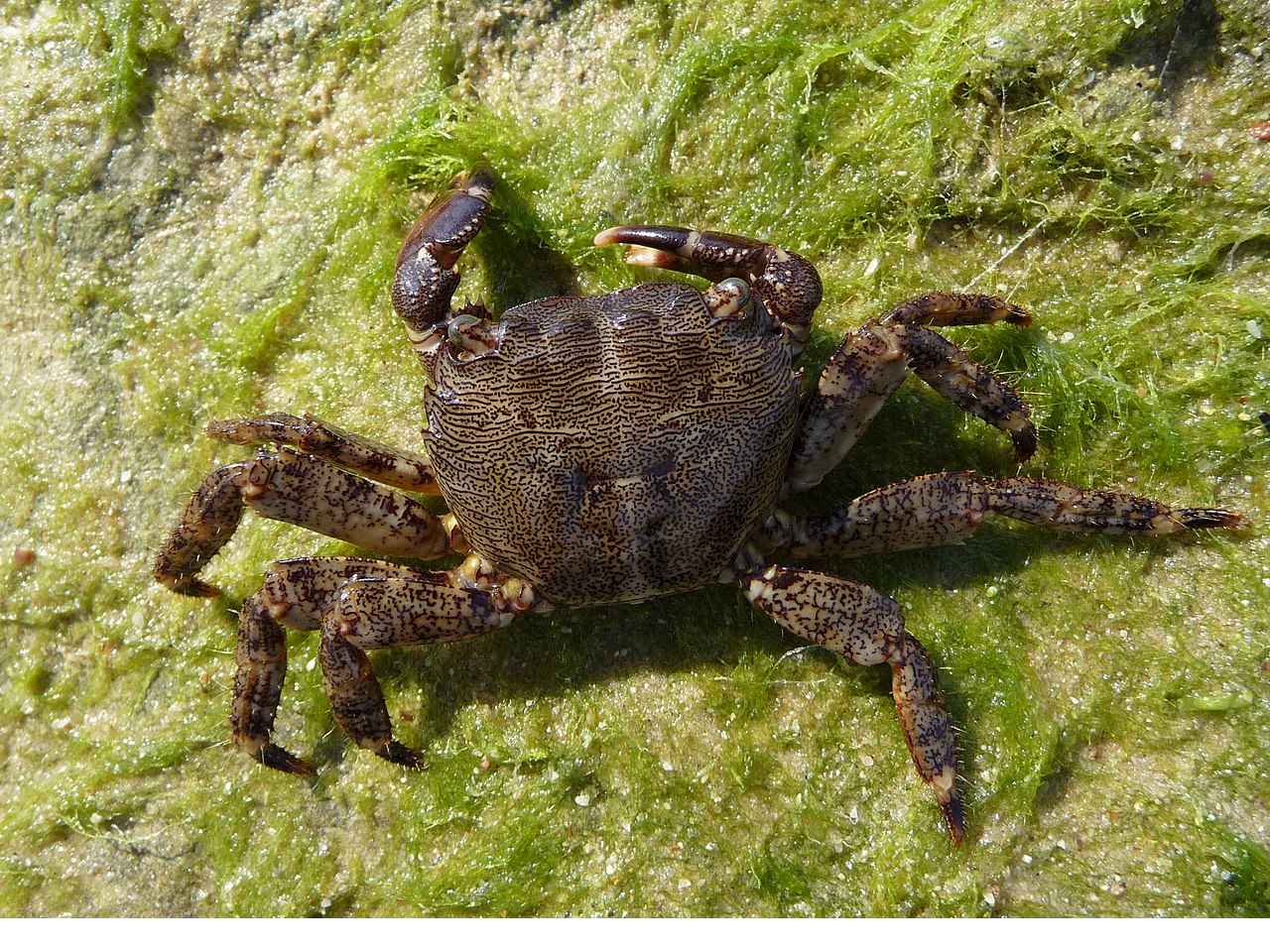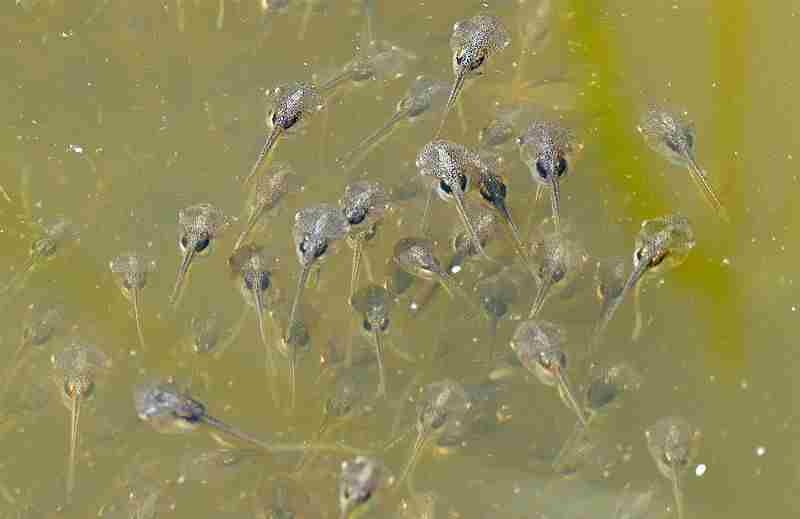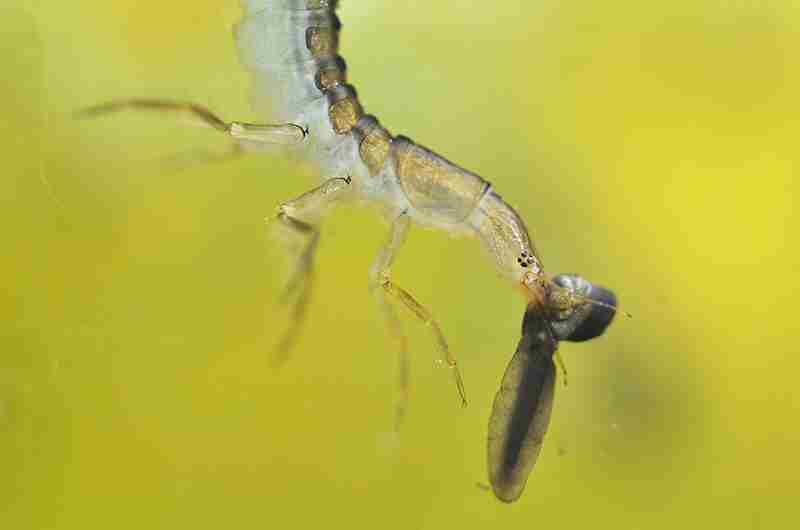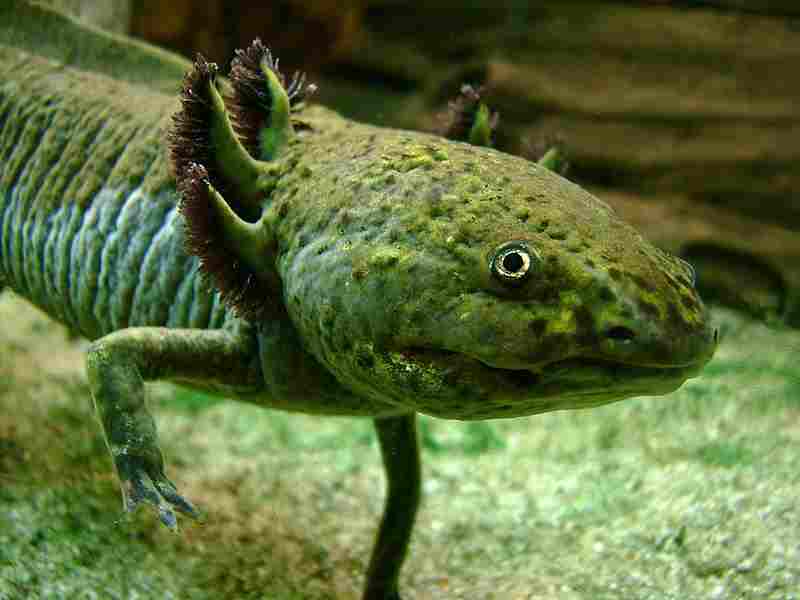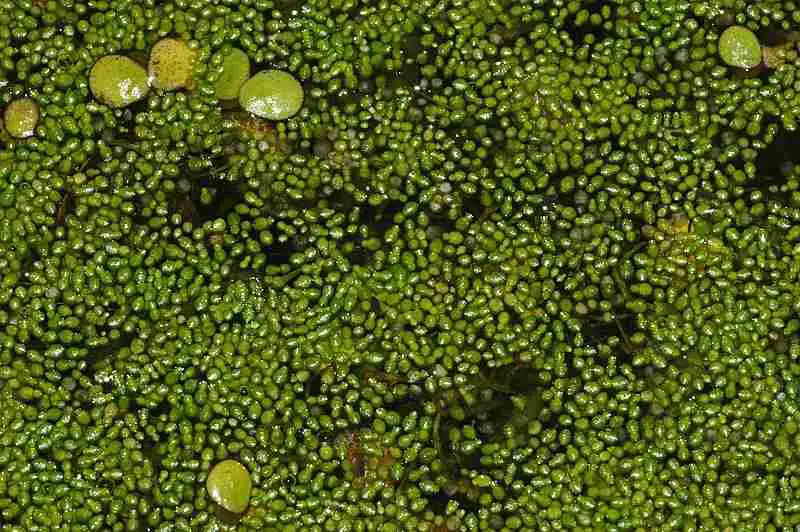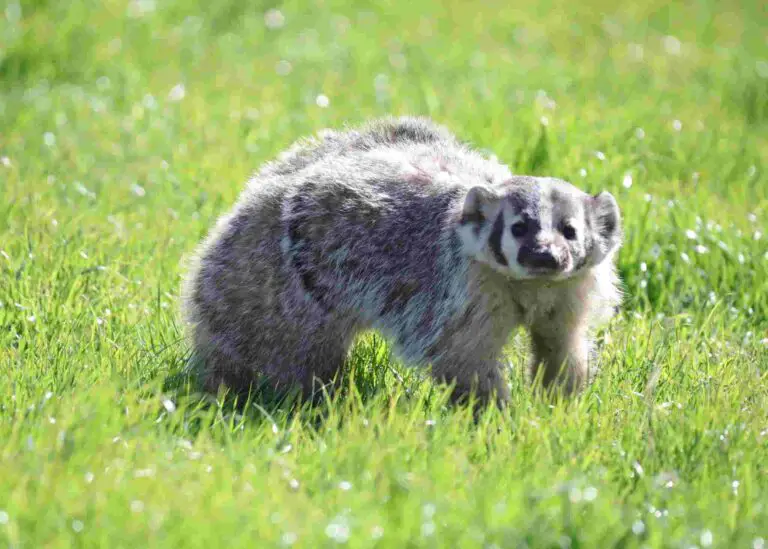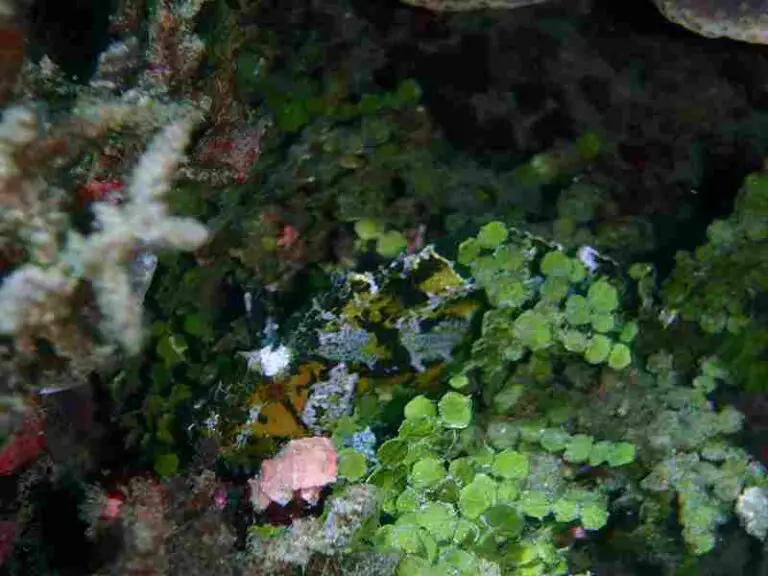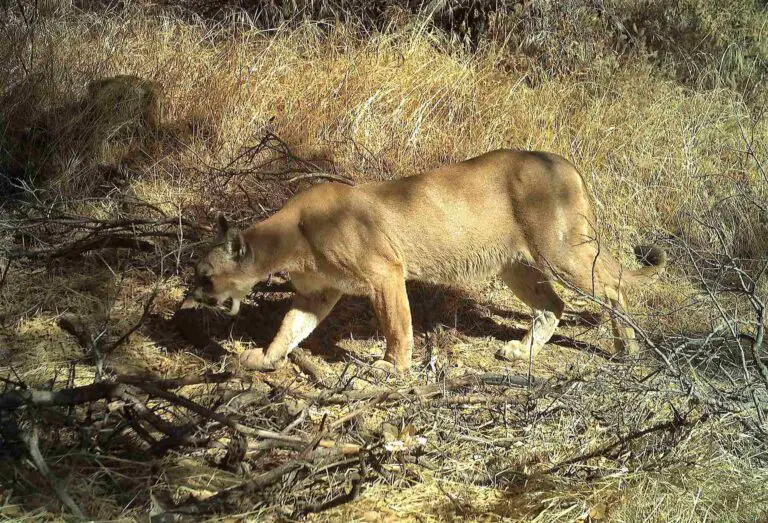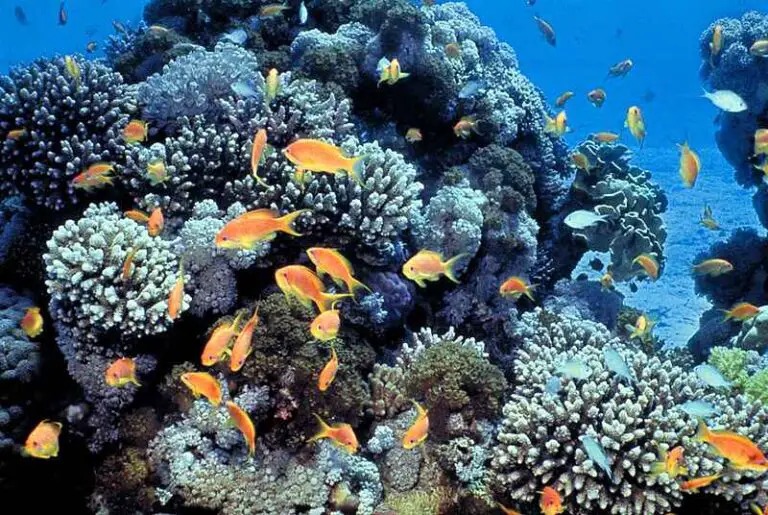7+ Scavengers In a Pond Ecosystem Discussed
Examples of scavengers in a pond ecosystem are snails, tadpoles, water beetles, scuds, crabs, freshwater prawns, amphipods, and fairy shrimp. These organisms play a vital role in nutrient cycling by feeding on dead organic matter, contributing to the breakdown of debris and the release of nutrients back into the ecosystem. Additionally, they serve as prey for various predators, linking them to the pond food web and influencing the overall structure and dynamics of the ecosystem.
1. Snail
Snails play a crucial role as scavengers in pond ecosystems, contributing to nutrient recycling and maintaining overall ecological balance. As detritivores, they feed on decaying organic matter, including dead plants and animals, algae, and other debris found at the bottom of the pond. Their feeding activity helps break down organic material, facilitating its decomposition and the release of nutrients back into the water.
In addition to their role as scavengers, snails also serve as prey for various predators within the pond ecosystem, such as fish, birds, and certain invertebrates. This positions them as an essential component of the food web, linking primary producers and consumers in the ecosystem. Their population dynamics can have significant impacts on the abundance and distribution of other organisms within the pond community.
Despite their relatively slow movement, snails are efficient scavengers, continuously foraging for food across the substrate of the pond. Their ability to consume a wide range of organic matter makes them adaptable to fluctuations in food availability and environmental conditions. As such, snails contribute to the resilience and stability of pond ecosystems by helping to regulate nutrient cycles and support the diversity of life within these habitats.
2. Tadpole
Tadpoles, the larval stage of frogs and toads, are important scavengers in pond ecosystems. These aquatic creatures primarily feed on algae, detritus, and plant matter, playing a vital role in controlling algal growth and nutrient cycling within the pond. As herbivores, they consume a variety of plant materials, including decaying leaves and submerged vegetation, contributing to the breakdown of organic matter and the release of nutrients back into the water column.
In addition to their herbivorous diet, tadpoles may also exhibit scavenging behavior by consuming dead plant and animal material found within the pond. This opportunistic feeding behavior allows them to utilize available resources efficiently, contributing to the overall productivity and functioning of the ecosystem. Tadpoles are themselves preyed upon by a variety of predators, including fish, birds, and aquatic invertebrates, further integrating them into the pond food web.
Tadpoles undergo metamorphosis as they transition into adult frogs or toads, during which their feeding habits change. While tadpoles primarily rely on filter feeding and grazing, adult frogs and toads often become carnivorous, consuming insects and other small invertebrates. This transition represents an important ecological shift within the pond ecosystem, as it impacts the dynamics of both predator-prey relationships and nutrient cycling processes.
3. Water Beetle
Water beetles are aquatic insects belonging to the order Coleoptera, and they are highly adapted to life in freshwater habitats, including ponds. As scavengers, water beetles play a crucial role in consuming organic debris and detritus, contributing to the breakdown of dead plant and animal matter within the pond ecosystem. Their scavenging activities help to recycle nutrients and maintain water quality by preventing the accumulation of organic material.
Water beetles exhibit a diverse range of feeding strategies, depending on their species and life stage. Some species are primarily detritivores, feeding on decaying plant material and organic debris, while others are omnivorous, consuming both plant and animal matter. Additionally, certain predatory water beetle species may also scavenge on dead or dying organisms, further contributing to nutrient cycling and energy transfer within the pond food web.
In addition to their role as scavengers, water beetles serve as important prey items for various predators within the pond ecosystem, including fish, amphibians, and birds. Their abundance and distribution can have significant impacts on the structure and functioning of the pond community, influencing the dynamics of both predator-prey interactions and nutrient cycling processes.
4. Scud
Scuds, also known as freshwater shrimp or amphipods, are small crustaceans that inhabit pond ecosystems worldwide. These scavengers play a vital role in consuming detritus, algae, and decaying organic matter, contributing to the breakdown and recycling of nutrients within the pond environment. Scuds are efficient detritivores, using their specialized mouthparts to graze on organic material and microscopic organisms found on submerged surfaces.
In addition to their scavenging activities, scuds also serve as an important food source for a variety of predators within the pond ecosystem, including fish, amphibians, and predatory invertebrates. Their abundance and distribution can influence the trophic dynamics of the pond food web, with fluctuations in scud populations impacting both predator and prey populations within the community.
Scuds are well adapted to a wide range of environmental conditions, making them resilient to fluctuations in temperature, water quality, and food availability. Their ability to thrive in diverse habitats and consume a variety of organic material makes them integral components of pond ecosystems, supporting the overall productivity and functioning of these environments.
5. Crab
Crabs are not commonly found in pond ecosystems but are occasionally present in brackish or freshwater environments, particularly in areas where freshwater sources meet saltwater bodies. In such cases, they can serve as scavengers, contributing to the breakdown of organic matter and nutrient recycling within the ecosystem. Crabs are opportunistic feeders, consuming a variety of food items, including decaying plant and animal material, algae, detritus, and small invertebrates.
While crabs may not play as significant a role in pond ecosystems as other scavengers, their presence can still impact nutrient cycling and community dynamics. As omnivores, they contribute to the decomposition of organic matter and the release of nutrients back into the water column, influencing the overall productivity and functioning of the ecosystem. Additionally, crabs may serve as prey for larger predators, such as birds, fish, and mammals, further integrating them into the pond food web.
6. Freshwater Prawn
Freshwater prawns are crustaceans belonging to the family Palaemonidae, and they inhabit various aquatic environments, including ponds, rivers, and streams. These scavengers play an important role in consuming detritus, algae, and decaying organic matter, contributing to nutrient recycling and ecosystem functioning within pond ecosystems. Freshwater prawns are efficient detritivores, using their specialized mouthparts to graze on organic material and filter-feed on suspended particles in the water column.
In addition to their scavenging activities, freshwater prawns also serve as an important food source for a variety of predators within the pond ecosystem, including fish, birds, and larger invertebrates. Their abundance and distribution can influence the trophic dynamics of the pond food web, with fluctuations in prawn populations impacting both predator and prey populations within the community.
Freshwater prawns are well adapted to a wide range of environmental conditions, making them resilient to fluctuations in temperature, water quality, and food availability. Their ability to thrive in diverse habitats and consume a variety of organic material makes them integral components of pond ecosystems, supporting the overall productivity and functioning of these environments.
7. Amphipods
Amphipods are small crustaceans that are commonly found in pond ecosystems worldwide. These scavengers play a crucial role in consuming detritus, algae, and decaying organic matter, contributing to nutrient recycling and ecosystem functioning within ponds. Amphipods are efficient detritivores, using their specialized mouthparts to graze on organic material and filter-feed on suspended particles in the water column.
In addition to their scavenging activities, amphipods also serve as an important food source for a variety of predators within the pond ecosystem, including fish, amphibians, birds, and larger invertebrates. Their abundance and distribution can influence the trophic dynamics of the pond food web, with fluctuations in amphipod populations impacting both predator and prey populations within the community.
Amphipods are well adapted to a wide range of environmental conditions, making them resilient to fluctuations in temperature, water quality, and food availability. Their ability to thrive in diverse habitats and consume a variety of organic material makes them integral components of pond ecosystems, supporting the overall productivity and functioning of these environments.
8. Fairy Shrimp
Fairy shrimp are small, freshwater crustaceans that inhabit temporary or ephemeral ponds, where water is present for only part of the year. These scavengers play an important role in consuming detritus, algae, and decaying organic matter, contributing to nutrient recycling and ecosystem functioning within these unique aquatic habitats. Fairy shrimp are efficient detritivores, using their specialized mouthparts to graze on organic material and filter-feed on suspended particles in the water column.
In addition to their scavenging activities, fairy shrimp also serve as an important food source for a variety of predators within temporary pond ecosystems, including fish, amphibians, birds, and larger invertebrates. Their abundance and distribution can influence the trophic dynamics of these ponds, with fluctuations in fairy shrimp populations impacting both predator and prey populations within the community.
Fairy shrimp are adapted to the dynamic nature of temporary ponds, with dormant cysts allowing them to survive harsh environmental conditions and reestablish populations when favorable conditions return. Their role as scavengers and prey items contributes to the overall productivity and functioning of temporary pond ecosystems, highlighting their importance in these fragile habitats.
*Summary
-
Snail:
-
Crucial role in nutrient recycling by feeding on decaying organic matter
-
Preyed upon by various predators, linking them to the pond food web
-
-
Tadpole:
-
Feed on algae, detritus, and plant matter, controlling algal growth
-
Preyed upon by predators; undergo metamorphosis into adult frogs or toads
-
-
Water Beetle:
-
Consume organic debris, detritus, and dead plant material
-
Serve as prey for various predators, impacting pond community dynamics
-
-
Scud:
-
Detritivores consuming organic matter and microscopic organisms
-
Important food source for predators, influencing trophic dynamics
-
-
Crab:
-
Opportunistic scavengers consuming decaying organic matter
-
Serve as prey for larger predators, if present in pond ecosystems
-
-
Freshwater Prawn:
-
Detritivores contributing to nutrient recycling
-
Significant prey for various predators, affecting pond food web dynamics
-
-
Amphipods:
-
Detritivores and filter-feeders consuming organic material
-
Important prey for predators, impacting pond trophic dynamics
-
-
Fairy Shrimp:
-
Detritivores in temporary ponds, contributing to nutrient cycling
-
Serve as prey for predators, with adaptable dormant cysts for survival
-
| Scavenger | Summary |
| Snail |
– Nutrient recycling through feeding on decaying organic matter – Preyed upon by various predators, linking to pond food web
|
| Tadpole |
– Control algal growth by feeding on algae, detritus, and plant matter – Undergo metamorphosis into adult frogs or toads
|
| Water Beetle |
– Consume organic debris, detritus, and dead plant material – Serve as prey for various predators, impacting pond community dynamics
|
| Scud |
– Detritivores consuming organic matter and microscopic organisms – Important food source for predators, influencing trophic dynamics
|
| Crab |
– Opportunistic scavengers consuming decaying organic matter – Serve as prey for larger predators, if present in pond ecosystems
|
| Freshwater Prawn |
– Detritivores contributing to nutrient recycling – Significant prey for various predators, affecting pond food web dynamics
|
| Amphipods |
– Detritivores and filter-feeders consuming organic material – Important prey for predators, impacting pond trophic dynamics
|
| Fairy Shrimp |
– Detritivores in temporary ponds, contributing to nutrient cycling – Serve as prey for predators, with adaptable dormant cysts for survival
|
Related FAQs
1. What are scavengers in a pond ecosystem?
-
Scavengers in a pond ecosystem are organisms that feed on dead plant and animal material, helping to break it down into simpler forms and recycle nutrients back into the ecosystem.
2. Why are scavengers important in pond ecosystems?
-
Scavengers play a crucial role in nutrient cycling by breaking down organic matter, preventing its accumulation, and releasing nutrients back into the environment. They help maintain water quality and support the overall health and functioning of pond ecosystems.
3. What types of organisms act as scavengers in ponds?
-
Various organisms act as scavengers in ponds, including snails, tadpoles, water beetles, scuds, crabs, freshwater prawns, amphipods, and fairy shrimp. Each species has its own role in consuming organic debris and contributing to nutrient recycling.
4. How do scavengers contribute to the pond food web?
-
Scavengers occupy an important position in the pond food web by consuming dead organic matter. They serve as prey for predators, linking primary producers (such as algae) to higher trophic levels (such as fish and birds), thus influencing the overall structure and dynamics of the ecosystem.
5. What factors can affect scavenger populations in ponds?
-
Scavenger populations in ponds can be affected by various factors, including water quality, availability of food resources, predation pressure, habitat alteration, and environmental disturbances such as pollution or habitat destruction.
6. Can scavengers be beneficial for maintaining pond health?
-
Yes, scavengers are beneficial for maintaining pond health as they help to keep the ecosystem clean by removing dead organic matter. This reduces the likelihood of water quality issues, such as eutrophication, and supports the diversity of life within the pond.

